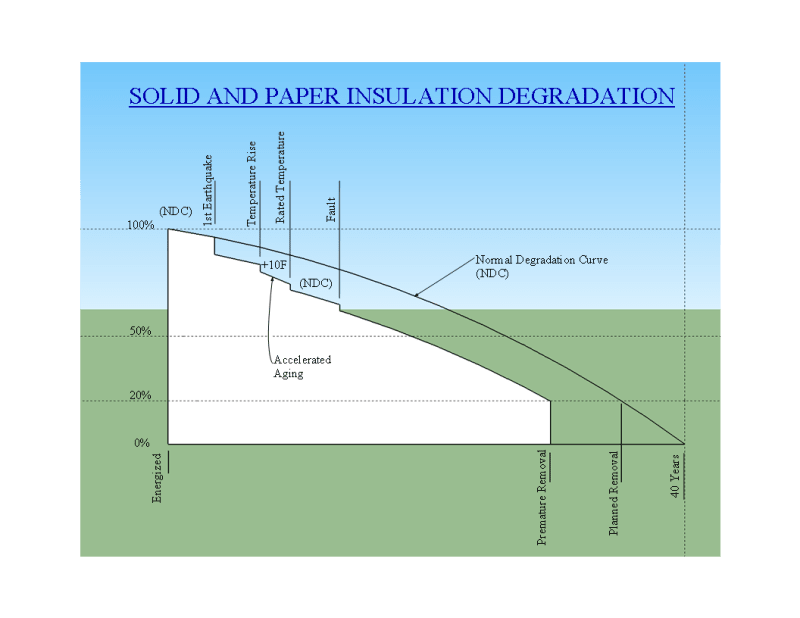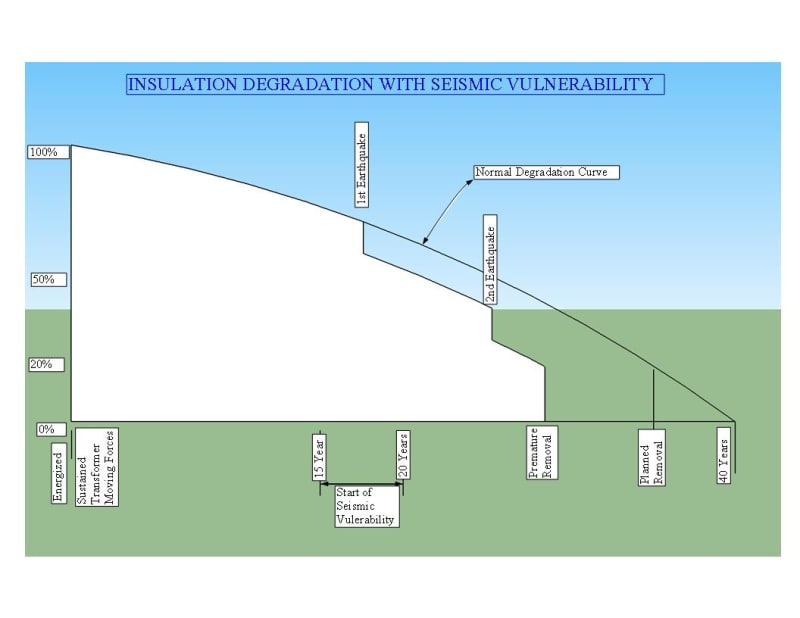prc
I wish you the best in your retirement.
Please forgive me if I have upset you or seemed to disrespect you.
I have the highest regard for you.
I value your advice and years of experience and education.
I agree with you that we won't know positively what the failure sequence was until we see an official report.
We are speculating, and your input, based on your knowledge and experience, is heavily weighted in our estimation.
As we speculate, we receive new insights from experts such as yourself.
We are not trying to come up with a cause of the event that will stand up in court or will satisfy an insurance company, we are trying to learn more about the various factors involved in transformer failures and tank ruptures.
We thank you most sincerely for your input and beg you to rejoin the speculation.
A couple of points of clarification: (For others, not for you, prc. I know that you know this already.)
Short circuit withstand;
1) As per IEC 60076-5, transformers are designed to withstand thermally 2 sec of over currents. Copper temperature from the heating at the end of 2 sec shall be less than 250 C.
That would imply that a transformer will survive a 2 second short circuit.
Thus the time to failure under short circuit conditions will be more than 2 seconds.
Time constant:
The definition of time constant that I have learned is:
When a value is changing (heating, the current charging a capacitor, current building in an induction coil, etc.) in response to a step change, the time constant is the time to reach about 63% of the terminal or steady state value from the value at the time that the step change occurred.
The value is generally accepted to have reached steady state after 5 time constants.
Final or stable temperature is reached when the heat input equals the heat rejection.
BUT, that's not the only factor.
With a bolted fault the windings would theoretically reach a stable temperature in 30 to 50 minutes.
There are two caveats to apply.
1. An external arcing fault will be less current than a bolted fault and the final or terminal temperature will be lower.
2. The winding will often fail before the final temperature is reached.
Example of time constants.
Initial temperature = 0 degrees and after a step change in heat input the temperature stabilizes at 100 degrees.
The time constant is the time to reach about 63 degrees or 63% of the temperature change.. After 5 time constants the temperature will stabilize at 100 degrees.
After the second time constant the temperature will have reached: 63 deg. + ((100-63) x .63) = 86.31 deg.
The third time constant will see: 86.31 deg + ((100 - 86.31) x .63) = 94.93 deg.
If you want an exact figure to replace 63% use 1 minus the reciprocal of the mathematical constant e, where e is an irrational and transcendental number approximately equal to 2.718281828459
1 - (1 / 2.718281828459) = 1 - 0.3678794411714484) = 0.6321205588285516 = 63%
Has the Leidenfrost effect ever been considered or investigated in regards to transformers and the heating of the oil, and the heating of the copper when it is above the Leidenfrost point and less heat is conducted away by the oil?
eg: Copper heating more rapidly as less heat is transferred to the oil.
WIKI said:
The Leidenfrost effect is a physical phenomenon in which a liquid, close to a surface that is significantly hotter than the liquid's boiling point, produces an insulating vapor layer that keeps the liquid from boiling rapidly. Because of this 'repulsive force', a droplet hovers over the surface rather than making physical contact with the hot surface.
This is most commonly seen when cooking, when a few drops of water are sprinkled in a hot pan. If the pan's temperature is at or above the Leidenfrost point, which is approximately 193 °C (379 °F) for water, the water skitters across the pan and takes longer to evaporate than it would take if the water droplets had been sprinkled into a cooler pan.
The effect is named after the German doctor Johann Gottlob Leidenfrost, who described it in A Tract About Some Qualities of Common Water in 1751.
Bill
--------------------
"Why not the best?"
Jimmy Carter
![[afro2] [afro2] [afro2]](/data/assets/smilies/afro2.gif)
![[clown] [clown] [clown]](/data/assets/smilies/clown.gif)
![[afro2] [afro2] [afro2]](/data/assets/smilies/afro2.gif)
![[clown] [clown] [clown]](/data/assets/smilies/clown.gif)



![[peace] [peace] [peace]](/data/assets/smilies/peace.gif)